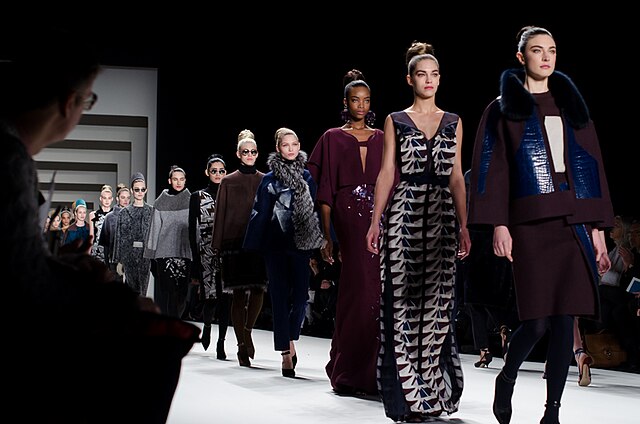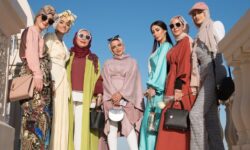
For decades, Paris and Milan have held the throne as the world’s fashion capitals, dictating trends, aesthetics, and the rhythm of global couture. Their runways are synonymous with luxury, artistry, and prestige. Yet, as the fashion industry globalizes and digital culture accelerates the spread of trends, new cities are emerging as fashion powerhouses in their own right. From Tokyo to Lagos, these rising fashion capitals are not just imitating Parisian elegance or Italian craftsmanship—they are redefining what global glamour truly means.
The Changing Face of Fashion Capitals
Traditionally, four cities formed the “Big Four” of fashion weeks: Paris, Milan, New York, and London. These hubs built their reputations on established luxury houses, innovative designers, and global media attention. However, the 21st century has seen a decentralization of fashion influence. Technology, cultural pride, and sustainability movements have opened the doors for fresh voices to gain recognition.
The new wave of fashion capitals reflects diversity, local heritage, and creative independence. These cities are producing designers who embrace global perspectives while remaining rooted in their own cultural identities—making the industry richer, more inclusive, and more exciting.
Tokyo: Where Tradition Meets Avant-Garde
Tokyo is often seen as the laboratory of fashion. Japanese designers such as Rei Kawakubo (Comme des Garçons) and Yohji Yamamoto revolutionized Western fashion in the late 20th century by breaking away from formality and structure. Today, Tokyo continues this legacy with bold experimentation.
The city’s Harajuku district has long been a breeding ground for subcultures, from Gothic Lolita to streetwear icons like A Bathing Ape. What makes Tokyo unique is its seamless ability to blend deep-rooted traditions like kimono textiles with futuristic silhouettes. As sustainability becomes key, Japan’s mastery of minimalism and high-quality craftsmanship also positions Tokyo as a leader in slow fashion.
Seoul: The K-Fashion Wave
If K-pop reshaped global music, K-fashion is doing the same for style. Seoul has emerged as a fashion capital fueled by its cultural exports, tech-savvy designers, and a youthful energy. Brands like Gentle Monster and designers showcased at Seoul Fashion Week are now international names.
Seoul’s fashion ecosystem thrives on speed, adaptability, and digital-first strategies. The rise of influencer-driven fashion has allowed Korean designers to reach global audiences instantly. The aesthetic blends futuristic streetwear with traditional Hanbok-inspired elements, creating a distinct and recognizable style.
Lagos: Africa’s Rising Fashion Star
Lagos is more than just a bustling Nigerian metropolis—it’s Africa’s new fashion frontier. The city’s annual Lagos Fashion Week has propelled African designers into the global spotlight, celebrating bold prints, vibrant fabrics, and Afro-futuristic aesthetics.
Designers like Lisa Folawiyo and Kenneth Ize are reimagining African heritage for modern audiences, using indigenous techniques like handwoven aso-oke fabric in contemporary designs. Lagos is not just producing fashion; it is telling cultural stories of resilience, heritage, and innovation, proving that Africa is not just a consumer of global trends but also a powerful contributor.
Dubai: The Middle East’s Glamorous Gateway
Dubai has rapidly transformed into a fashion hub, blending Middle Eastern elegance with international luxury. The city’s strategic position as a global crossroads has made it a magnet for designers, influencers, and luxury brands. Dubai Design District (d3) and events like Arab Fashion Week highlight regional talent while attracting global attention.
What makes Dubai distinct is its ability to merge modest fashion with haute couture, catering to both traditional values and cosmopolitan tastes. The city is also pushing sustainability through eco-conscious labels and initiatives, aligning with the growing demand for ethical luxury.
São Paulo: Latin America’s Creative Powerhouse
São Paulo has long been a leader in Latin American fashion, championing both sustainability and cultural richness. Brazilian designers often take inspiration from the country’s biodiversity, indigenous traditions, and vibrant street culture.
São Paulo Fashion Week, one of the largest in the Southern Hemisphere, has put designers like Osklen and Alexandre Herchcovitch on the international stage. The city’s fashion emphasizes natural materials, tropical aesthetics, and inclusive representation—elements that align perfectly with the global call for diversity and eco-responsibility.
Mumbai: The Fusion of Bollywood and Couture
In India, fashion is inseparable from cinema. Mumbai’s influence on global fashion comes not only from its designers but also from Bollywood, which dictates trends for millions across Asia and the diaspora.
Designers like Manish Malhotra and Sabyasachi Mukherjee have bridged traditional Indian textiles with global luxury aesthetics. Weddings, festivals, and film premieres drive the demand for opulent, handcrafted fashion. Yet, alongside glamour, a new generation of Indian designers is pushing for minimalist, sustainable, and urban fashion, giving Mumbai a dual identity: tradition-rich and forward-looking.
Rethinking Global Glamour
The rise of these cities signals a shift from Eurocentric dominance to a multi-polar fashion world. Paris and Milan will always remain iconic, but glamour is no longer confined to European runways. Tokyo’s avant-garde spirit, Seoul’s digital power, Lagos’s cultural storytelling, Dubai’s luxury-meets-tradition, São Paulo’s sustainability, and Mumbai’s cinematic influence are expanding the definition of global style.
What’s remarkable is how each city is not just about clothes—it’s about lifestyle, identity, and narrative. Fashion has always been storytelling, and these capitals are offering tales of resilience, heritage, creativity, and innovation.
Conclusion: The Future of Fashion Capitals
The question is not whether these emerging cities will replace Paris or Milan, but how they will coexist in shaping the industry. Global fashion is becoming more democratic, diverse, and dynamic. The runways of Lagos, Seoul, or Mumbai may not carry centuries of haute couture history, but they carry something just as powerful: the future.
As the spotlight shifts, one thing is clear—global glamour is no longer about a few cities dictating the rules. It’s a kaleidoscope of cultures, aesthetics, and visions. And in that diversity, fashion finds its true beauty.




